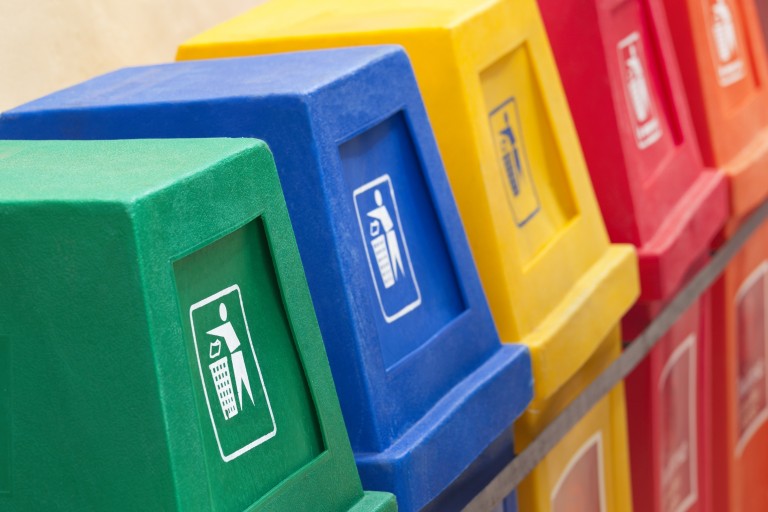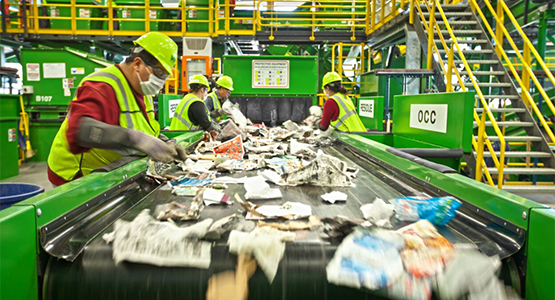Recycling of construction materials
When we talk about recycling, most of us imagine disposing of plastic, cardboard, glass and / or aluminum waste in containers of different colors. But have you thought about recycling building materials as well?
The most common building materials today have alternatives for recycling. Concrete, metals, glass, bricks and plastics can be recycled (depending on their condition) and this will reduce energy needs and emissions by up to 90% in most cases.
Recycling of construction and industrial materials generated on a construction site is becoming increasingly important. The benefits for us and the environment from recycling are significant. Current estimates show that if the entire concrete and asphalt pavement generated annually were recycled, it would save the energy equivalent of 1 billion liters of petrol or the result would have the effect of removing more than 1 million cars from the road. Much of this energy saving is due to reduced consumption of natural resources, such as quarrying or oil extraction and refining.
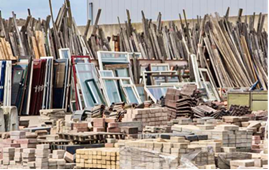
Poorly managed landfills are dangerous for the environment with the release of pollutants into groundwater. On the other hand, recycling construction materials can help avoid this problem.
What can be recycled and how?
Old and excess materials from your construction site can be recycled. They include:
- Masonry that can be used again to improve roads.
- Windows, doors and roofs, if in good condition, can be reused in the construction of other homes.
- Appliances, including sinks and bathtubs, can be installed elsewhere.
- Timber and wooden objects, if in good condition, can be reused or converted into fuel.
- Metals can be melted down and converted into other products with a variety of uses.
- Cardboard and paper can be used to produce pulp and re-used.
- Plastic crates / containers and plastic bags can be recycled to melt and create new products or, if possible, reused.
- Oil-based paint cannot be recycled, which means that you will have to use a hazardous household waste collection program (HHW). If your community does not offer this, you will need to dry the paint with cat litter crystals and / or newspapers, after which you can safely dispose of it in a waste container. And for water-based paint, recycling is quite possible.
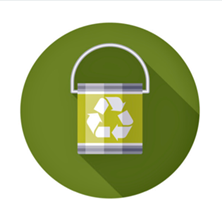
Some of the most commonly used building materials can have a negative impact on health and the environment if they are simply disposed of in a regular rubbish bin. For example, gypsum plasterboard in landfills releases hydrogen sulfide – a poisonous gas, and lead in contact with water makes it toxic.
Tips for disposing of and recycling construction materials:
• Paint
The first step in recycling paint is to store it properly. Be sure to cover the container with paint after use to prevent it from drying out. You can also wrap the lid in a small towel or plastic bag to provide extra sealing. Store the paint in a cool, dry place between uses.
If you no longer need half-empty paint cans, see if you can donate them before you decide to throw them away or recycle them. Many school art groups, public theaters and other organizations will accept the paint used.
Buy only the required amount of paint. That way, you won’t have any leftovers wondering what to do when you’re done. Measure the walls you plan to paint and multiply the length by the height to determine the square footage (do not include doors and windows in the multiplication). A gallon of paint will cover about 350 square feet with a single coat of paint.
Recycle empty paint cans.
If you have emptied the paint container, allow it to dry completely, then recycle the box with other metals.
• Asbestos
Asbestos-containing materials must be humidified to prevent toxic fibers from entering the air. The asbestos box must then be sealed and clearly labeled. The material should then only be taken to landfills licensed to accept asbestos.
Once it arrives at the landfill, it is left in a special area designated for asbestos only. The landfill is responsible for ensuring that there is no leakage or emissions of asbestos into the environment, because there is always the possibility of contaminating the soil, air or water.
• Bricks
Bricks can be restored and reused in buildings, walls and infrastructure, such as bridges and sewers. Undamaged bricks can even be sold. And damaged bricks can be used to build surfaces, such as the floors of tennis courts or athletics tracks.
Additionally, when recycling, if the bricks are contaminated with traces of plaster, they can decompose into a very fine material that can be used instead of sand or even be turned into new bricks.
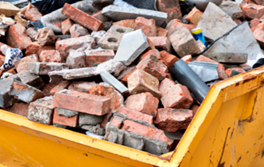
• Glass from windows
If the windows are not painted with lead paint, there are several options for recycling.
While glass bottles are constantly recycled without a problem, the same cannot be said for window glass. The two types of glass have different chemical compositions and melting temperatures, which means that they cannot be recycled together because window glass often has some kind of coating. There are many different types of glass, so they cannot be combined in the recycling process.
But while window glass is not easy to recycle, there are many other ethical options for using it. For example, it can be melted and processed into fiberglass. Broken glass can be combined with concrete to create floor tiles and countertops. Some companies even use old glass for decorative purposes.
You can ask, for example, if some local schools will not want it. It is possible that there are artists who work with him and accept it as a donation.
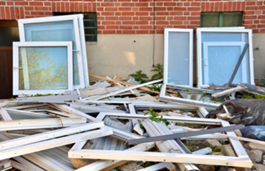
The reuse of recycled materials is a highly innovative, effective and artistic expression of designs with the environment in mind. For site builders, using recycled materials can be satisfying and even fun.
Depending on your location, there will be different types of recycling tools and resources. Once you find your local recycling companies and find out what you have and do not have the right to recycle, according to the rules of the local company, start!
The environment will be happy that you did.


